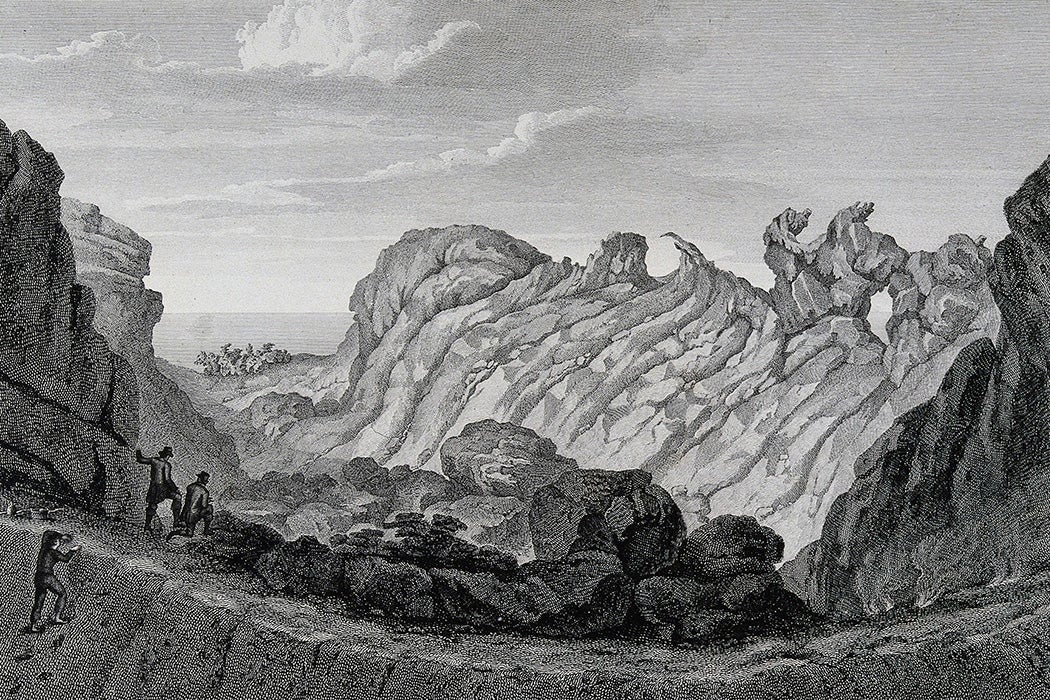Before Columbus sailed the ocean blue, the basic model of European attack on new worlds was prototyped in the Canary Islands. Enslavement of the local population, genocide, and radical transformation of the environment in the name of extractive exploitation followed the violent colonization of the islands. The ancient Greeks had called the islands beyond Gibraltar Macaronesia, meaning the fortunate islands, but the islands were less than fortunate in their colonizers.
In 1341, the King of Portugal sent Niccoloso da Ricco south to the Canaries, which were named, according to Pliny the Elder, after the large number of dogs found there. One of the treasures to be found on the islands was orchil, a prized dye produced from local lichens, much in demand by Iberian cloth industry. According to environmental historian Alfred W. Crosby, Da Ricco
took a cargo of skins, fats and oils, dyestuffs, and few slaves, and returned home. Majorcans and Catalans came next, followed by French, Spanish, Portuguese—even Scots. None established a permanent foothold in the 14th century.
Crosby suggests the year 1402 as the birth of European imperialism because that was when French forces conquered Lanzarote, one of the seven main islands of the Canaries. Since hundreds of Guanches, the indigenous peoples of the archipelago, had been captured for slavery before the French invasion, that date may need to be pushed back even further.
The Guanches were largely wiped out by 1600, so they can’t testify for themselves, but evidence suggests they were related to the Berbers of North Africa and started to arrive on the Canaries in the second millennium BCE. They were pastoralists: their livestock, and their fires, began the transformation of the native ecosystem. (Just as in the Americas, the notion of a pristine or virgin landscape on the islands was all in the European mind.)
By the time Columbus set sail on his first voyage in 1492, European sailors knew they couldn’t sail straight west into the teeth of the prevailing winds. They had to start by heading south, past the northwest coast of Africa, to pick up the west-bound trade winds. The islands off this part of the African continent—Madeira, the Canaries, the Cape Verdes—were the first stop of Europeans heading around the world.
Only the Canaries, closest to the African mainland, had indigenous people inhabiting them. European conquest of the islands proceeded slowly. The Guanches were still holding out on two of the Canaries’ seven islands when Columbus stocked up. Tenerife, the largest of the islands, wouldn’t fall under Spanish control until 1495, after two invasions. As in the Americas, warriors on horseback and diseases were the most effective European methods of conquest.
“Europeans crossed the waters to the Canary Islands with a simplified version of the ecosystem of the Mediterranean littoral. This portmanteau ecosystem was crucial to their successes—and failures—as colonists in Macaronesia and elsewhere,” writes Crosby.
“Dogs, sheep, goats, pigs, barley, wheat, peas” were already found on the islands. The Europeans added “cattle, asses, camels, rabbits, pigeons, chickens, partridges, ducks, grape vines, melons, pears, apples and—most important—sugar.” This is notable, argues Crosby, not only for the resulting ecological transformation of the islands, but also because the “first horses, cattle, sheep, goats, pigs, chickens, and honey bees to arrive in America” likely originated in the Canaries, the last stop before the transatlantic crossing, the last chance to take aboard fresh food and live animals.
Weekly Newsletter
The first sugar cane in the West Indies also probably came from the Canaries. The first sugar mill on the islands was on Gran Canaria in 1484. Sugar became the most important island export.
The introduction of sugar in particular transformed the Canaries, as it would the Caribbean islands. Crosby, author of such classics as The Columbian Exchange and Ecological Imperialism, details the resulting deforestation of the Canaries under the reign of sugar producers, who also had an insatiable demand for labor. With the indigenous peoples driven to extinction, slave labor had to be imported.
The story would be the same in the Caribbean, Columbus’s next stop after the Canaries.







